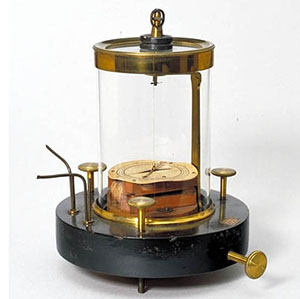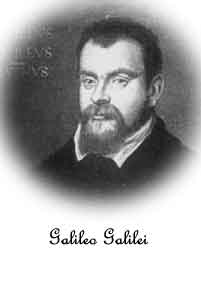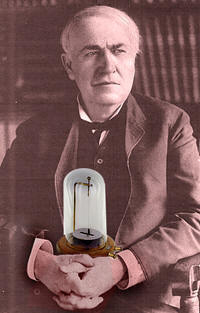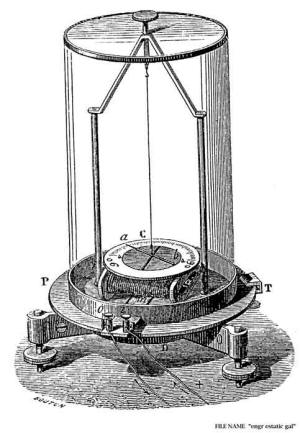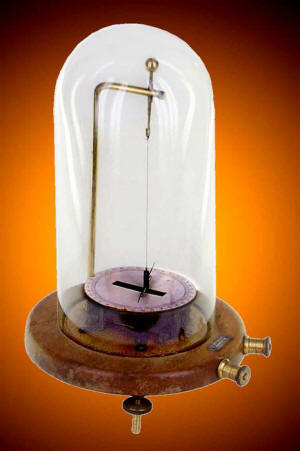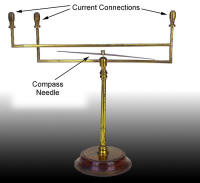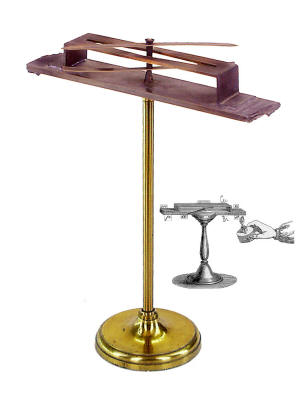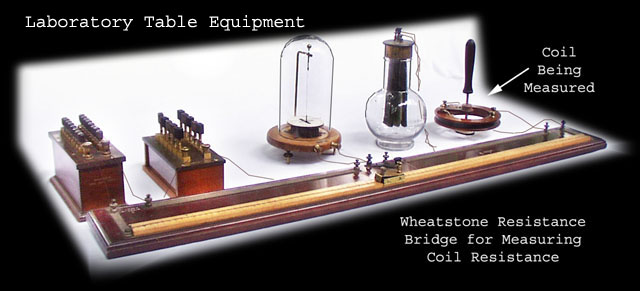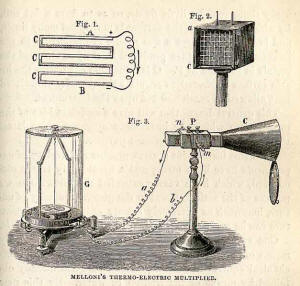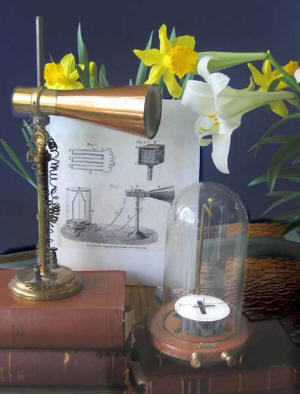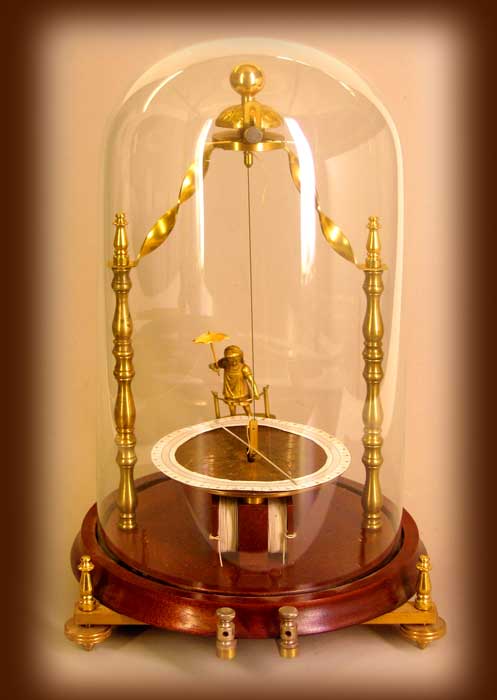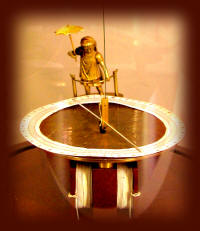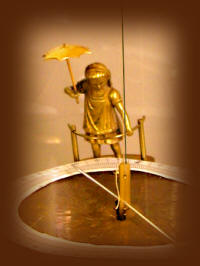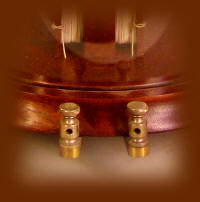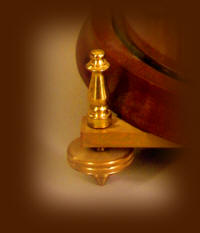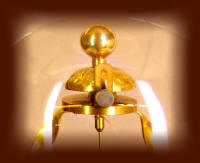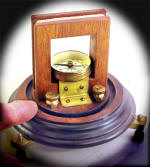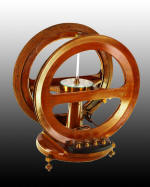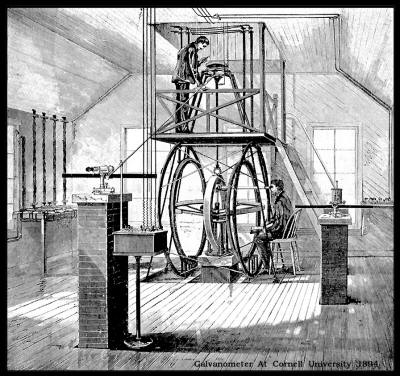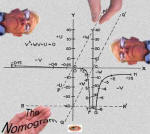|
No Words are Powerful Enough To
Express The Importance
Of Basic Scientific
Research To Each Of Us And
Our Future. We must
fight for its rights!
Perhaps we should recognized,
sponsor and establish a yearly world celebration for the
12 most significant scientific instruments. one a month. It would be
educational.
We suggest the first two candidates should be: 1,
Galileo's
Telescopes
Internationally famous, broadened our perspective by introducing us to
the Universe. 2,
Nobili's
Astatic Galvanometers; gave us our
first meaningful connection to the micro universe of the electron.
completely revolutionizing our finger tip control of great power: tapping
the energy of the atom, communicate
around the world and to the planets, looking into our genes putting
our telescopes on other planets etc.etc.etc.etc.etc.etc.etc.etc.etc.etc.etc.etc.etc.etc.etc.etc..
Both instruments deal with the flow of fundamental particles; ( photons with
telescope) (electrons with galvanometer) from a historical point of view
they both are key examples of how basic scientific research really works
not our popular view, but the dull tedious work funding, marketing, and
laboratory that goes into every discovery all of this is hidden from us
because of the lack of suitable words (Remember
No Words are Powerful
Enough)
Galileo's telescopes, and early examples of astatic galvanometers
are on display at the
IMSS in Florence Italy The telescope is out in front one of the
first things one see's. The little astatic galvanometers that showed us
how to have finger tip control of enormous power is
almost hidden in a darkish room off to one side. Hmmm?
Both these instruments were made by Natural Philosophers who
were interested in searching out Natures secrets. The
technologist developing these instruments started out with simple off the shelve materials wood,
glass, and wire to make their instruments. They used these primitive
tools and their current knowledge to design and build them. They
used them to do basic research. and made significant fundamental
discoveries, discoveries that made enormous differences in our everyday
world, discoveries that helped in improving the instruments
(tools) which in turn made more discoveries keeping the
information loop growing to even more discoveries. How can we possibly
ignore such an instrument or instruments and the scientist and
technologist using them? What little we know about them has and can at
times been swamped by authors attention to the personal habits and
eccentric behavior. The instruments and discoveries total ignored
or poorly described.
Galileo's
telescope which show us views of the magnificent universe we live
in gave us the first hint of the number of stars out there that we
never could have seen with the unaided eye. They gave us a poetic
understanding of who we really were and are.

click here to
visit our page on making this fine and very precise instrument for Adler
Planetarium.
Nobili
's astatic galvanometers like the telescope, which magnifies the
effect of photons on our eyes, magnifies effects of
electrons flowing by the action of a compass needle in a circuit. The astatic galvanometer is responsible for
switching on the technological world we live in. Like the
telescope the astatic galvanometer gave us the view of the universe
,but in this case the micro universe, of the electrons so that we could benefit from this knowledge to
harness the energy of electron to our everyday needs.
The astatic galvanometers
were the first instruments, after the discovery of the initial
connection of electricity and magnetism, to give us quantitative and
sensitive measurements to guide us through the micro universe of the electrons
how to use them in new inventions and
instruments this in spite of the fact that we can't see them
as we do with
photons. the fact that we can't see them
as we do with
photons.
Electrons are the messengers connecting our ears, eyes,
nose, and sense of touch to our brains. They also do the shuffling
of the activities of the brain. They do the chemistry of the universe.
There are more electrons in our bodies than atoms and molecules, and
there are many more electrons in the universe then stars. With this
endorsement why has there been such little recognition of the instrument
and the technologist that opened the door to the universe of the
electron with the astatic galvanometer and as Galileo opened the door of the
astronomical universe with his photon telescope?
Why has this very important instrument and its inventors been
woefully neglected?
Is it because there is apparently little to no
emotional people drama in the personal lives of the scientist who worked
on and used them?. Are there no stories strong enough to write a book that would sell?
Is it because electrons acts in a very anti social manner, always trying to
get away from each other. Silly questions perhaps; however, wouldn't it
be helpful to us if we had a better grasp of story of the electron
and its varied and busy life?
Don't they ever get tired? Isn't it sad that electrons are not treated like the super stars that they are? What
would happen if they went out on strike?
|

